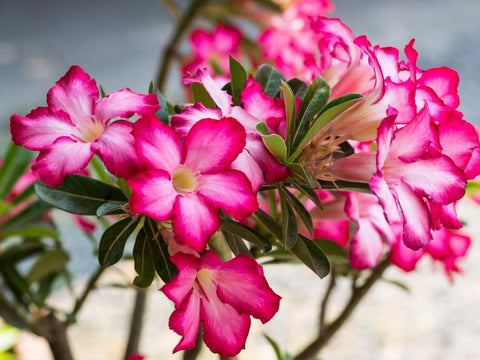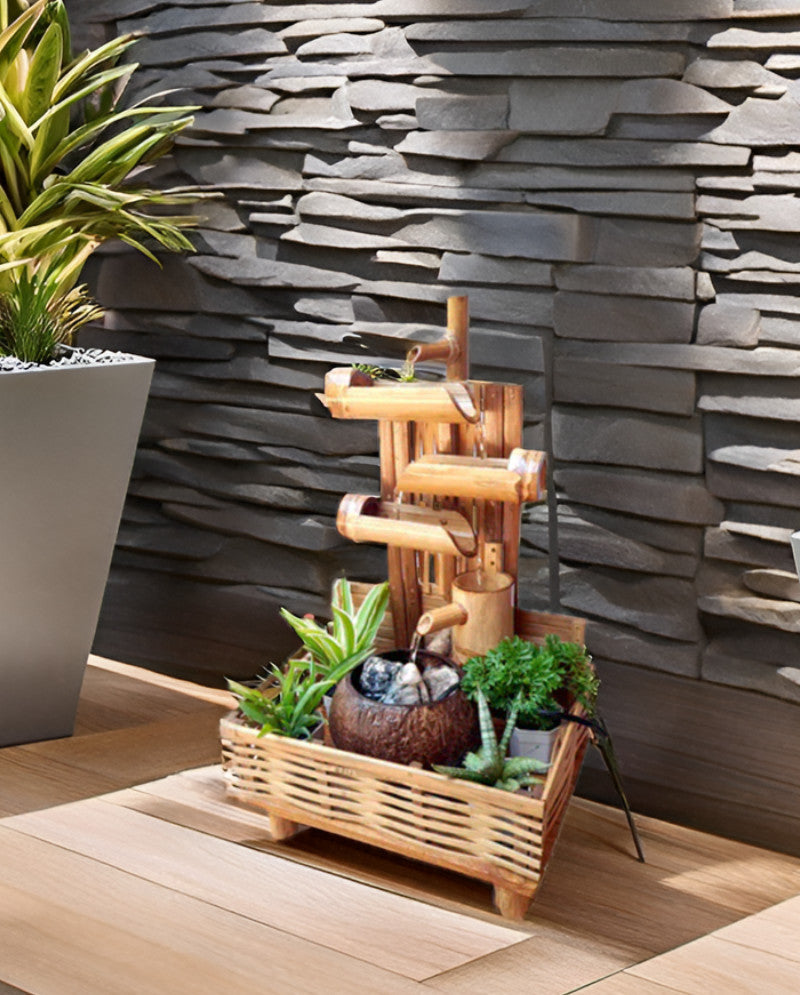
All you need to know about the adenium plant - (Desert Rose Plant)
WHAT IS ADENIUM OBESUM DESERT ROSE PLANT?

Adeniums - the desert rose plant is an indoor succulent with a wide variety of 2 - 3 inch flowers. Easy-to-grow and an excellent choice for the intrepid gardener, this Arabian native is wonderful in warm climates or interior container gardens.
Although the desert rose plant is a carefree succulent, it won’t bloom unless you mimic its native region’s conditions. The desert rose plant comes in many varieties and grows throughout northeastern Africa and Arabian Peninsula. Like its home region’s cultural variety, the desert rose comes with many names, including the Impala Lily, Mock Azalea, Sabi Star, and Dwarf Bottle Tree. It comes up with multi-color flowers on the same pot, which makes it more beautiful.
Preferable conditions to grow Adeniums:
There are five varieties of true Desert Rose, and all are native to arid or semi-arid climates, yet they can all adapt well to tropical and semi-tropical settings. Indeed, these rugged desert dwellers adapt to almost any situation as long as they have plenty of sun and warmth and well-draining soil.
- Temperature - In general, this potted specimen is a sun lover and blossoms in the prolific outdoors. It requires 21°C to 38°C to grow well, and like most succulents, cannot survive in cold temperatures. If you live somewhere that isn’t arid year-round, always move your desert rose inside when the climate changes. Adenium can remain active throughout the winter months. If you bring your plant into your house for the winter, it will probably stay in a semi-dormant state until spring arrives. During this time, just keep it in a warm room with bright, indirect light.
- Soil preference - The key to keeping your desert rose happy is to give it lots of drainage Casa De Amor Adenium Organic Potting Soil provides plenty of space for water to drain. You can also put layers of gravel above and below the soil to prevent your succulent from rotting.
- Fertilizer - Adenium obesum plants require lots of nitrogen in their soil, so it’s best to apply a high-nitrogen fertilizer directly to the soil before each blooming period. Adeniums should be fertilized when they are actively growing during the spring and summer months. We recommend a balanced fertilizer with an elevated middle number (phosphorus) to assist in flower formation. There is a critical balance between too much and too little fertilizer since these plants are sensitive to elevated fertilizer salt levels in the soil. This can be seen on the plant with the symptomatic browning of the leaf edges.
- Prune - Because these plants can grow quite large, a combination of pruning and under-potting is essential to keep them at a manageable size. A regular pruning schedule will help keep your plant fresh, vigorous, and well-groomed. During the growing season, pinch back or prune unruly growth. Before bringing the plant indoors for winter, prune back excessive growth as this will make the rest period more effective for the plant. Additionally, it will be easier to keep a smaller, more compact plant indoors during the winter months.
- Pests - The desert rose is susceptible to common pests like mealybugs, spider mites, fungal gnats, and aphids like all succulents. Without proper drainage, the succulent is also vulnerable to root rot and decay. To ensure the best care for your desert rose, keep the soil well-drained and check for bugs on the underside of the leaves and flowers.
- Lighting - As mentioned earlier, the vibrant flowers are sun-lover and bloom beautifully in the bright sun. So, if you live in a place that has bright and sunny mornings and afternoons, Adenium obseum is the perfect plant choice. However, keeping them in the shade can weaken their stems and make them leggy.
Desert Rose pests and problems :

The most pervasive problem for Desert Rose is root rot. The importance of avoiding overwatering cannot be overstated. These plants retain water in their thick roots. They do not need or want to stand in water, so it is far better to err on the side of underwatering when it comes to watering. Remember to water sparingly and make sure your plant’s drainage system is working properly.
Pests that may bother Desert Rose plants include:
- Aphids
- Spider mites (tetranychus urticae)
- Mealybugs
- Several types of plant-insect scales. If you find your plant has a problem with one of these pests, treatment with neem oil insecticides should provide a proper remedy.
- Oleander caterpillars may also cause problems for Adenium. If you notice caterpillars on your plant, pick them off by hand (wear gloves) and treat the plant with Bacillus thuringiensis (Bt) as quickly as possible. These caterpillars can defoliate your plant very rapidly, but if this happens don’t despair. Once the caterpillars are under control, the plant will spring back with new dark green leaves very quickly.
- A fungal disease called Anthracnose is sometimes a problem for Adenium. If your plant’s leaves develop tan lesions and then turn yellow and fall off, Anthracnose is probably the problem. Again, don’t despair. This disease usually occurs in the early summer and/or in the autumn and resolves on its own. Just reduce watering and rake up the fallen leaves to remove the fungus spores. Your plant should recover nicely.


